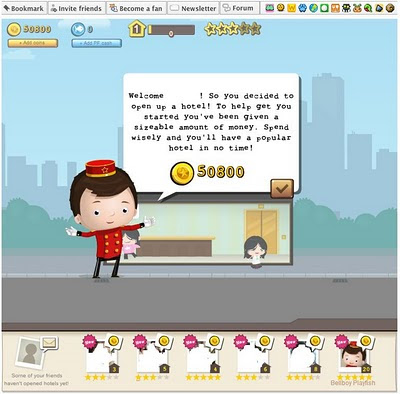After getting bored with yet more social games, I decided to try out the good ol' single player flash games. There are pretty good ones like Samorost, Machinarium, Bomba etc. One can easily find good games on Miniclip and one of the latest top games is Rubble Trouble by Nitrome.
Nitrome has many good games, including Bomba (which I covered earlier) and another game involving dismantling of ice pieces. Well the current Rubble Trouble game is also about dismantling of items, in this case it's buildings and the job centres around demolition using various tools.
Nitrome has many good games, including Bomba (which I covered earlier) and another game involving dismantling of ice pieces. Well the current Rubble Trouble game is also about dismantling of items, in this case it's buildings and the job centres around demolition using various tools.
The Rubble Trouble game play is very simple. It's just a mouse and click game where the player select given tools to destroy the required building(s) in a fixed period of time. There is ample time for most of the levels. The tools are pretty self explanatory and there will be a simple description tied to each tool. For example, using a canon ball tool means the player can position a canon ball firer and click to fire the ball at various angle. Clicking longer means there will be more power stored in the fired ball. Of course, the power bar for the canon ball is reactivated under prolong holding of mouse button.
There are many other tools and here's the description for some of them:
Nitro - area effect bombs with small radius. The 1st tool for demolition.
Grabber - A 'grab' machine to hold on to a piece of the building. Very useful to move pieces in order to avoid damaging surrounding important buildings.
Missiles - tough to control but useful.
Airstrike - carpet destruction with limited range but easy to use.
Chain gun - well, chain gun! A rotational military grade weapon and now it is used for demolition.
Nitro - area effect bombs with small radius. The 1st tool for demolition.
Grabber - A 'grab' machine to hold on to a piece of the building. Very useful to move pieces in order to avoid damaging surrounding important buildings.
Missiles - tough to control but useful.
Airstrike - carpet destruction with limited range but easy to use.
Chain gun - well, chain gun! A rotational military grade weapon and now it is used for demolition.
At the end of each level, the player can submit the high score and be compared against other players' scores for some competitive play. The fun part is not in the competitive play (I feel) but in completing each level of the puzzle.
There are other elements introduced into the game, for example some levels will include surrounding important buildings (e.g. glasshouse) and the player must not cause the destruction of these buildings. Another element is the trapped characters in the buildings and that means players must be careful when demolishing the buildings.
Another aspect of the Rubble Trouble that is interesting is the simple and fun dialogue at the beginning of the levels. These dialogues introduce the levels and make the game more personable. The Ivan's and the Larry's of Rubble Trouble do bring a smile to the face while the player tries hard to complete the levels.
I've only managed to finish up to level 23 out of the 30 levels and yes do give the Rubble Trouble game a try!





















































